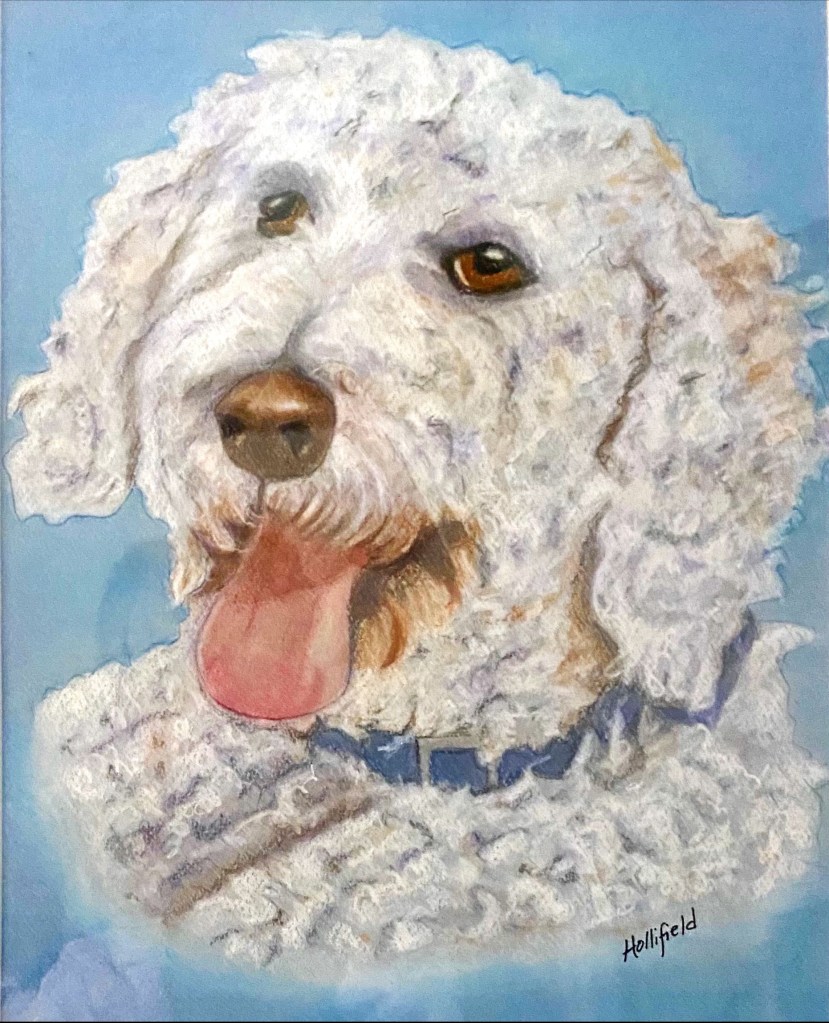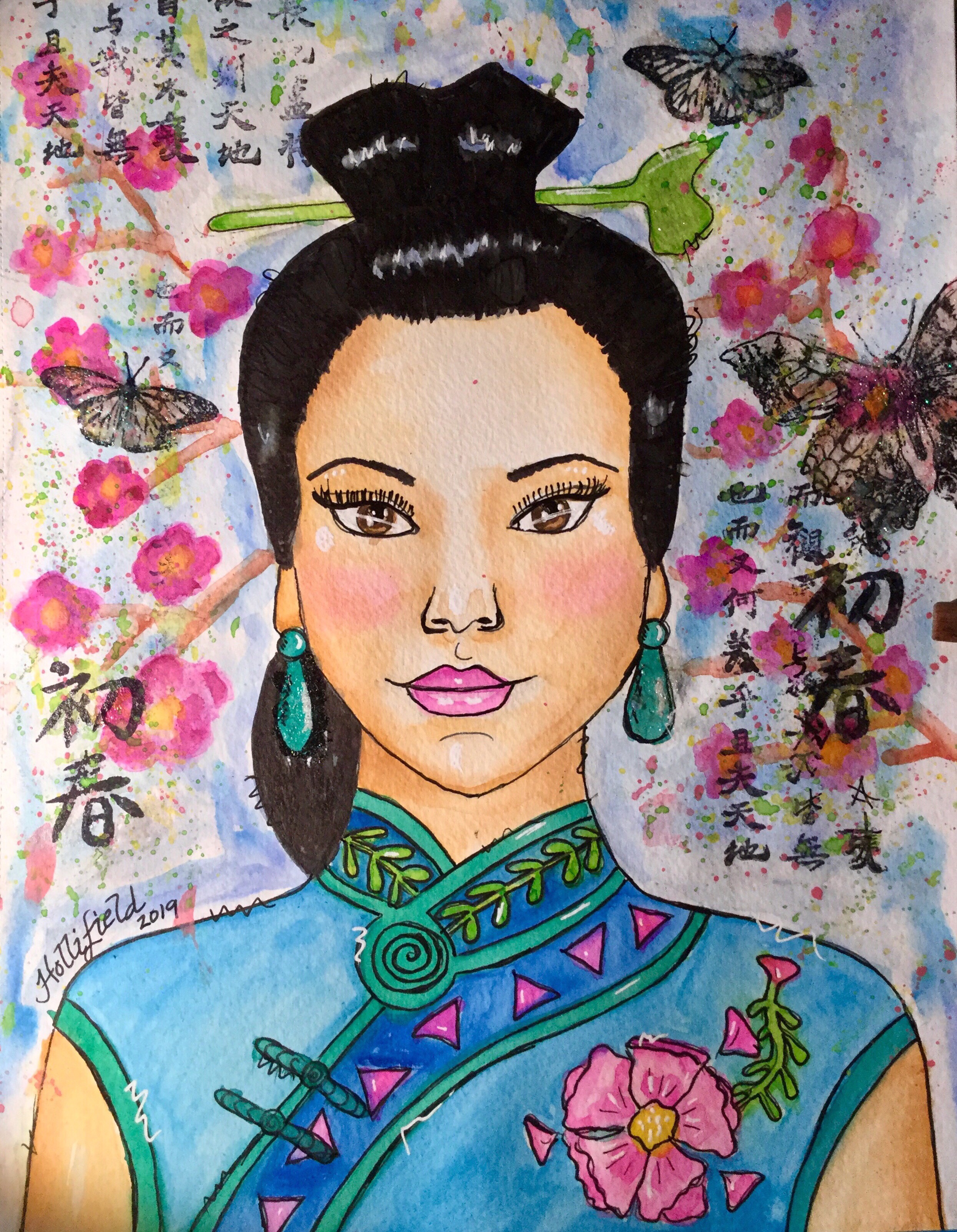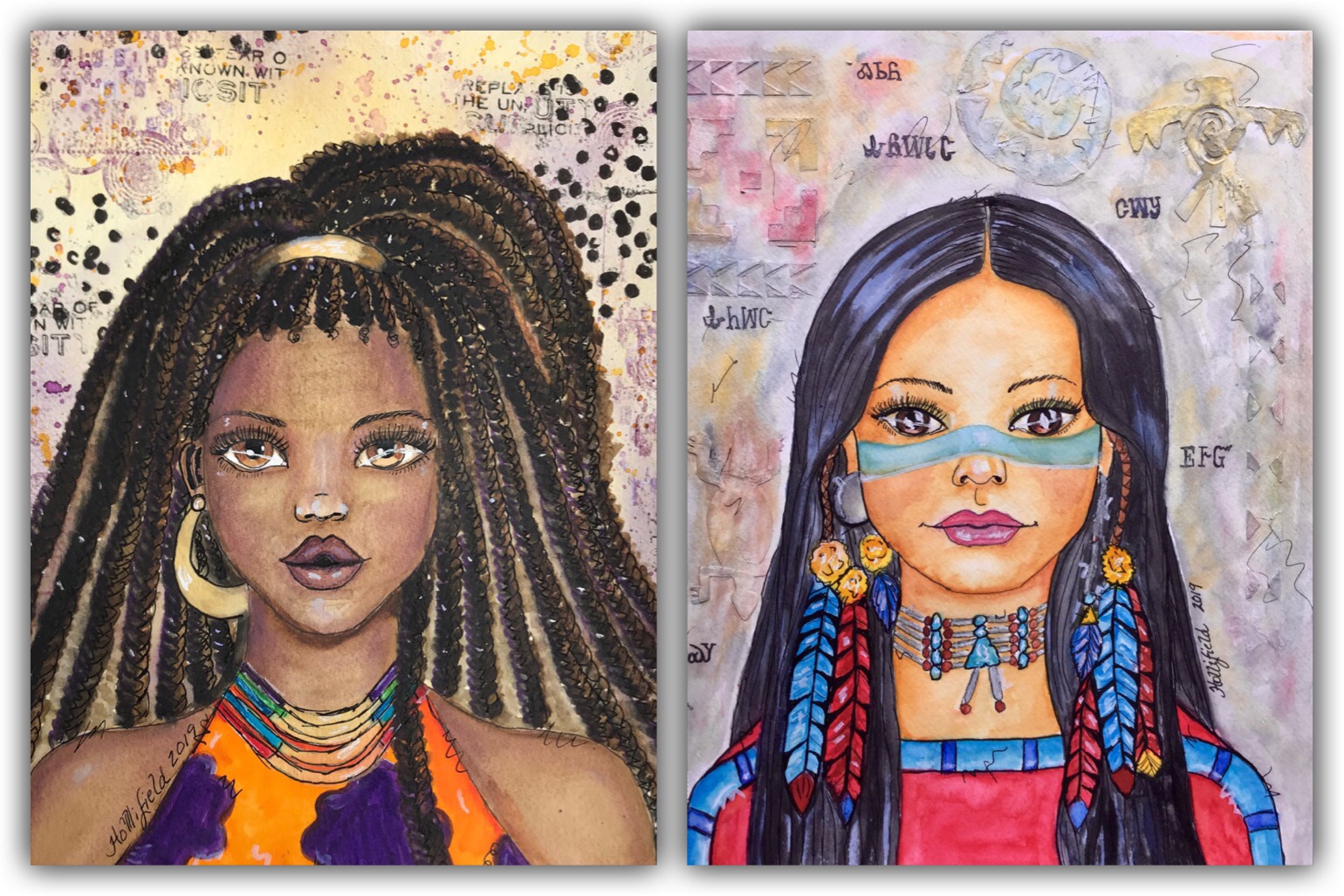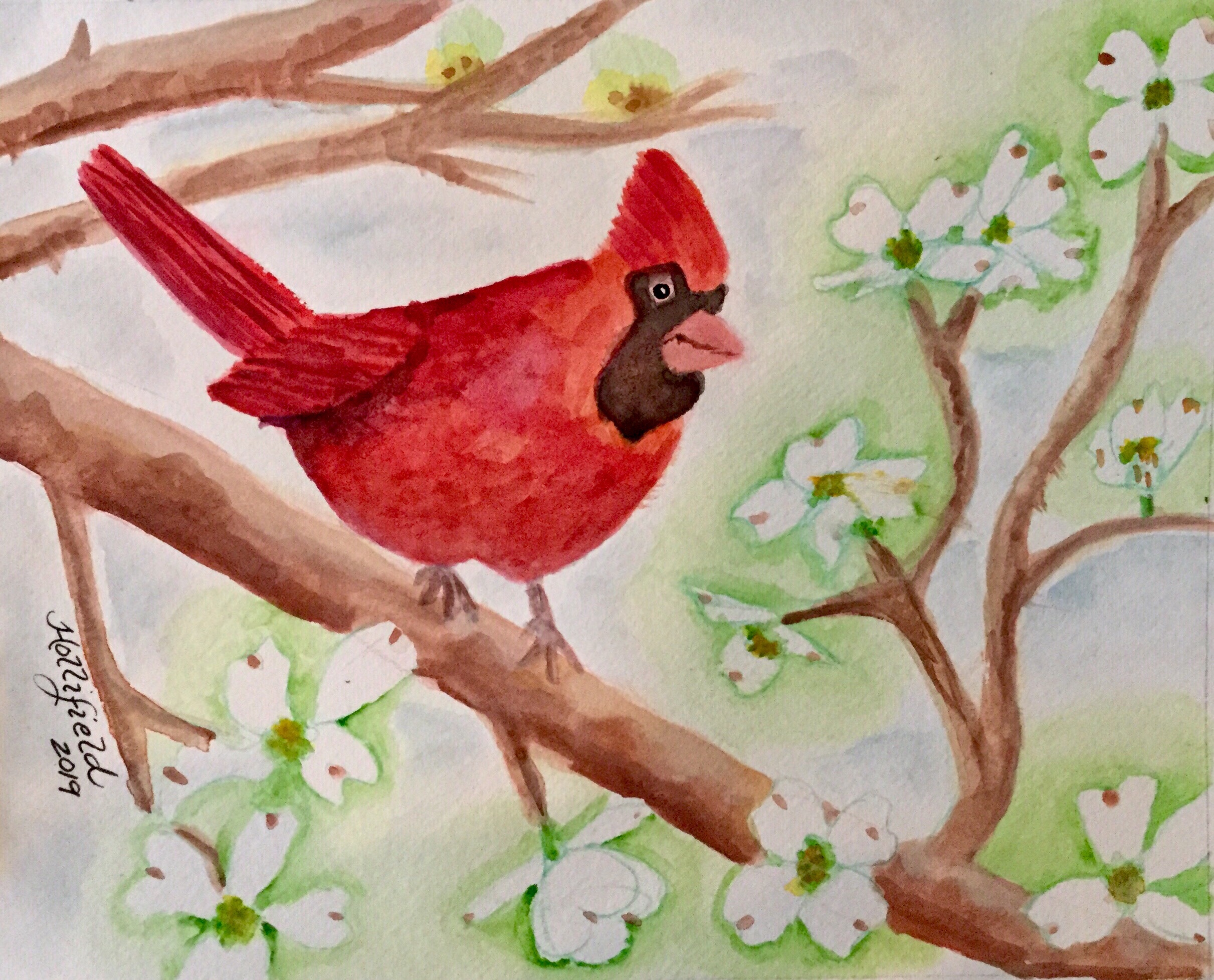I recently signed up for an online class taught by The Frugal Crafter, Lindsay Weirich, on her Teachable platform. The class, “30 Days to Better Painting!”, has ten lessons each using gouache, acrylics, and oils, although you can do all the lessons in one medium if you so choose, for a total of thirty lessons. The goal is to learn something new while also developing a daily painting practice by doing simple, thirty minute pieces.
I was really enjoying the class because Lindsay was offering valuable feedback and constructive criticism as the lessons progressed, and I found that really helpful. She always does this, but since this is a new class, there were a lot of current posts, and reading what she said to the other students was as helpful as what she said to me. I was through five of the gouache lessons when the moths attacked.
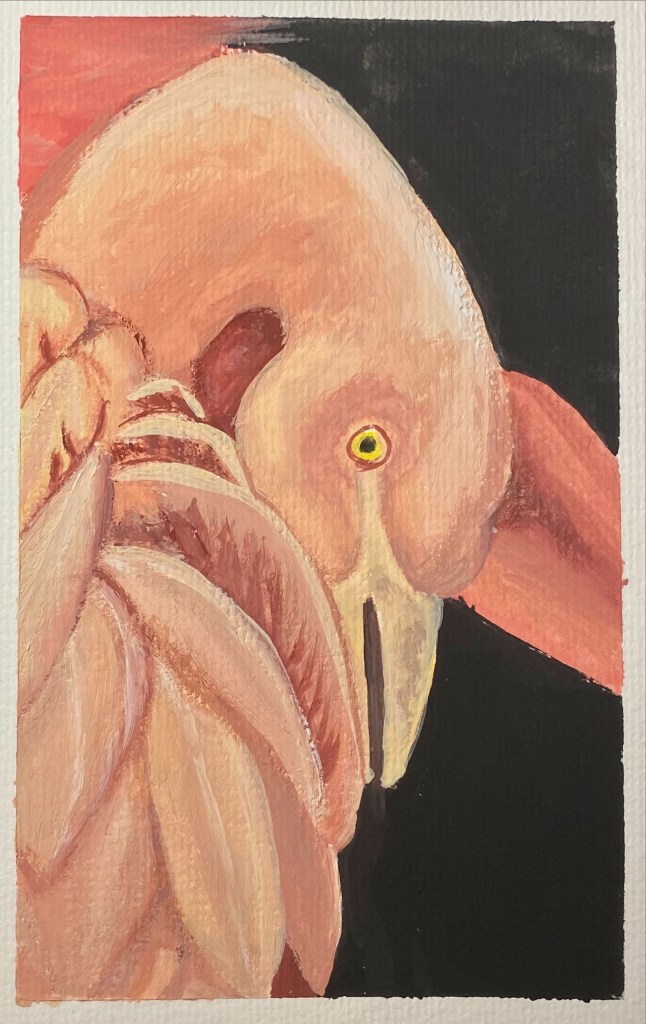
To begin at the beginning, the story starts with the lightbulbs on my front porch burning out. In years past, I changed them myself. However, as I have grown older, it has become more difficult for me to balance on a ladder, unscrew the fixture, hold it, and change the bulbs myself. My imagination has visions of cracked heads and dogs licking my blood as neighbors pass by without noticing. So when the yard man agreed to change the light, I was happy.
My Good Samaritan could not get the fixture screwed back on however. The glass had come loose, which may be one reason I had such a hard time with it previously. I told him to forget it, that I would just go to the hardware store and get a replacement. There were a lot of dead bugs in the fixture. I dumped them out, then took the fixture into the foyer so I could measure it. I promptly forgot about it. Oops!
I generally go to bed between 8:30 and 9:30 after I take the dog out and give her a chew treat. She happily takes it to bed and gnaws it, while I watch TV and drink iced tea until time for sleep. There was a moth flying around the television about two weeks ago that, after about three more days, was really getting on my nerves. Finally, I got up for a fly swatter, and low and behold, the foyer where the light fixture had been lying was FULL of small brown flying moths! The fixture had EGGS!
That night I probably swatted a hundred little moths. Their food source turned out to be an apothecary jar of dog treats on a bookcase in the hall that made a handy dispenser when we came in for our walks. No lid, mind you. That would have been a preventative a person my age might have thought to use, but I left the lid off as if no mishap could possibly happen to me. I also had treats in the pockets of a couple of little jackets hanging on the coat rack. Maggots and tiny moths in dog biscuits! Ugh! The treats were tossed outside. My adrenaline was pumping by then. Forget sleep. Thank goodness for the Internet. I needed research.

So began a journey I hope will help others. The good news is my moths were brown moths, a kind of pantry moth, but fortunately, not the ones you bring in with the dog food or the flour. By the time you see adult pantry moths of those types, you probably have a much worse infestation than I got from the light fixture. Likewise, although I found pupa casings on clothing, they were not clothing moths. Those clothing moth larvae are super destroyers and will eat most organic fibers. People spend a fortune in cleaning bills and discarded clothes and furnishings to get rid of them.
Here is an interesting piece of trivia: the moths themselves don’t have mouths. It’s the larvae that do the damage. The adults basically live to reproduce. An adult female can lay up to 500 eggs in her lifetime, usually about 50 at a time. Survival of the species, baby.
The first thing I discovered on an exterminator’s site was moth traps. They have them for both clothes and pantry moths, and they work by attracting the male moths with a pheromone. The link to the company that sells them, aptly named MothPrevention, had even more information, and I found these same traps on Amazon. I could get the pantry moth variety the next day with Prime and the clothes moth traps in two days. I ordered them.
In one of the articles I read about moth eradication, tiny wasps, called Trichogramma minutum, which are parasites for the moth eggs, were highly recommended by folks who had fought the battle of the moths. The wasps are too tiny to be seen, and they do not sting or otherwise harm humans or pets. They eat the moth eggs before they hatch into larvae. They are helpers.
I found the tiny wasps at Arbico-Organics. There are different species for west of the Rockies and for other pests. I called the company and talked to a wonderful customer service agent who actually listened to my predicament before trying to diagnose a solution. That impressed me— not to be interrupted— wow! Then she helped me devise a plan so I could order once every two weeks for a month, then once a month until I no longer had a problem. She said I’d have to go a couple of months without seeing any adults to be sure all the eggs were destroyed. The eggs can live a long time. One source said thirty years, but I think I’ll be safe from them before that much time passes. I ordered them.
The first shipment of pantry moth traps arrived the next day. By then, I’d swatted at least a hundred more and begun washing clothes and cleaning the kitchen. As soon as I opened the first trap and put it in the foyer where the apothecary jar nursery had been, three male moths flew in and got stuck immediately! I put the rest of the traps together and placed them in strategic locations. The ones in the foyer and kitchen have caught the most so far, followed by the ones in the hallway and the master bedroom. The other two, in the guest bedrooms, did not catch many. That was a relief to me because it meant the problem had likely originated with the porch light fixture and had not progressed to the entire house.

I began washing and drying what clothes I could and hung others in the car. It’s August, and temperatures have gotten up into the 80s and 90s. Sources say the eggs and larvae cannot live in temperatures of 135, so a hot car for four or more hours is a great alternative to the expense of dry cleaning. You can also freeze them. Since mine were not clothing moths, I felt pretty safe hauling my togs to the car and driving them around town so they could get good and hot. It was the coats in the foyer closet that concerned me most. I had found pupa casings on some of the sleeves and on the scarves. I even saw a moth inside a ball cap! Cook ‘em in the car!
I also found pupa casings on the ceiling of the foyer. I couldn’t see them with the light alone, but with the front door open, the sunlight was revealing. I had already begun washing walls and inside cabinets with vinegar water, which is supposed to dissolve the moth larvae and adult exoskeletons. I bought a popcorn ceiling paint roller at the hardware store and began rolling vinegar water on the ceilings. Surprisingly, it didn’t drip much although the bits that dropped from the popcorn texture were messy.
It took a couple more days for the clothes moth traps to arrive. Those haven’t caught any moths. I’m relieved by that. I’ve got my clothes moved back into my closets, and after receiving my tiny wasp shipment, I have hung those in the foyer, kitchen, and hallway to attack the hidden eggs. Today I’ve only seen one adult. The ceilings look clear. I’m hopeful. And my house is clean. That’s the silver lining.
If you have a moth problem, I hope you can catch it quickly. I was fortunate enough not to have to call an exterminator, but if it had exacerbated and the moths had gotten into more food, I would have had no choice. I threw away any food that looked like it was old or opened in a way they could have gotten into. I found moths inside the dog’s teeth cleaning treats! Yuk! Getting rid of these pests is time consuming and expensive. In my case, it was my own stupidity for bringing that light fixture inside.
Still, it makes a good story.

